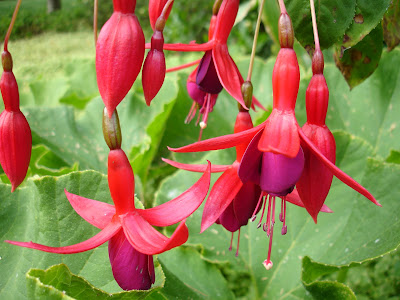
Last Monday was the last day of August. When I woke reluctantly I asked Michael to stop the calendar. I wasn’t ready for Monday after a busy weekend on the farm. Or September.
Even if this summer wasn’t a vacation. I'm already getting nostalgic for the heat induced stupor. But I,m also waxing nostalgic for back-to-school shoes, new notebooks and pens.
And pencils.
No one expresses the beauty of a pencil like Roger Deakin in Wildwood:
“ Nothing is so universally dependable, or comes so naturally to hand as a pencil. What could be simpler? For much of my life, I have lived with one behind my ear: either to mark out saw cuts or mortices for carpentry or to scribble marginalia or underlines when reading. I often write with pencil. It suits my tentative nature. It allows me literally to sketch out ideas before proceeding to the greater definition of ink. It was the first tool I used to write or to draw, and still suggests the close relationship between the two activities. I know I shall never out grow pencils. They are my first, most natural means of expression on paper. It is comforting and liberating to know that you can always rub out what is pencilled. It is the other end of the spectrum from carving in stone. The pencil whispers across the page and is never dogmatic.”

So why had I tucked all my pencils away. Was I reserving them for the day I start drawing again? I wish I could save money like I save pencils. After reading about Deakin’s love affair with the pencil I decided to revive mine and do my daily writing in “lead”. Lead is a misnomer we actually write with graphite a form of carbon, considered the highest grade of coal, but due to the difficulty in igniting it makes it a poor fuel. It is also the most stable form of carbon under standard conditions so will likely not increase our carbon footprint.
I forgot the child-like graphite glide, actually I am a heavy handed writer my pencil probably tromps, across the page. I forgot sharpening, like lighting a cigarette, had a certain sexiness. A doing-ness to it that users of the opposable thumb “clicking their Bics” miss. I surely missed that stop in full sentence to hone the tool.
Now that I write in pencil, my wordy traces leaden gray and fragile, I wonder if in the future someone finding my notebooks in a roadside dumpster will be able to read my ashen scribbling. Will the microscopic particles of graphite clinging to wood fiber slowly decomposing recede? Will this blog even exist in some form? Or is it as erasable as lead?
That end is way too far off to accommodate in my immediately nostalgic musings today: Labor Day. I saw hoards of campers on the freeway on Friday heading out to what they didn’t know was going to be the wettest weekend since April. Our own plans to build the deck were washed out by torrential rains. The lovely end of summer that lingered around in blue skies all week dumped on us. It’s been months. And the unofficial drought ends as squalling, drizzly, fog-swaddled September was born this week.
I tumble leaf like into a soft optimism as my favorite season, Fall, begins. I was corrected by my editor once for capitalizing seasons. “They are not proper names,” she said. To me they are. The Seasons are countries we enter. Forgive me this victorian metaphor. It’s the lovely poetic effects of cooler temperatures, decaf coffee and the scratch of lead across the page.
Labor Day weekend: it’s a funny holiday celebrated by trying to seize the tail of fleeing summer. Not a hello but a good-bye. Do you want to be standing on the shore waving good-bye? Or do you want to be on the cruise ship pulling off, heading into Autumn? My friend, Tsukina, says we only have two seasons here: light and dark. I imagine it is hard for most of us to celebrate the coming darkness. Especially in the Northwest where leaden skies dim what little light we do get at this latitude. There is something sinister in darkness, we don’t want to welcome. Maybe it’s the decaf optimism, but I’m looking forward to fires in the cast iron stove, a book and incandescent light. I’m looking forward to sleeping a little longer, dreaming more than doing, and the muffling of noisy summer. I’m looking forward to bare trees over garish dahlias.
More writing less digging.
But that is a long way off. There are more plums to pick, and the corn and tomatoes are ready. Today is Labor Day. We’re still doing our summer projects, between rain showers, which means digging post holes for the deck, and I’ll have a pencil behind my ear to mark out saw cuts, as the end nears.

It's a muddy job but it has to be done, we can't get into our front door.




















